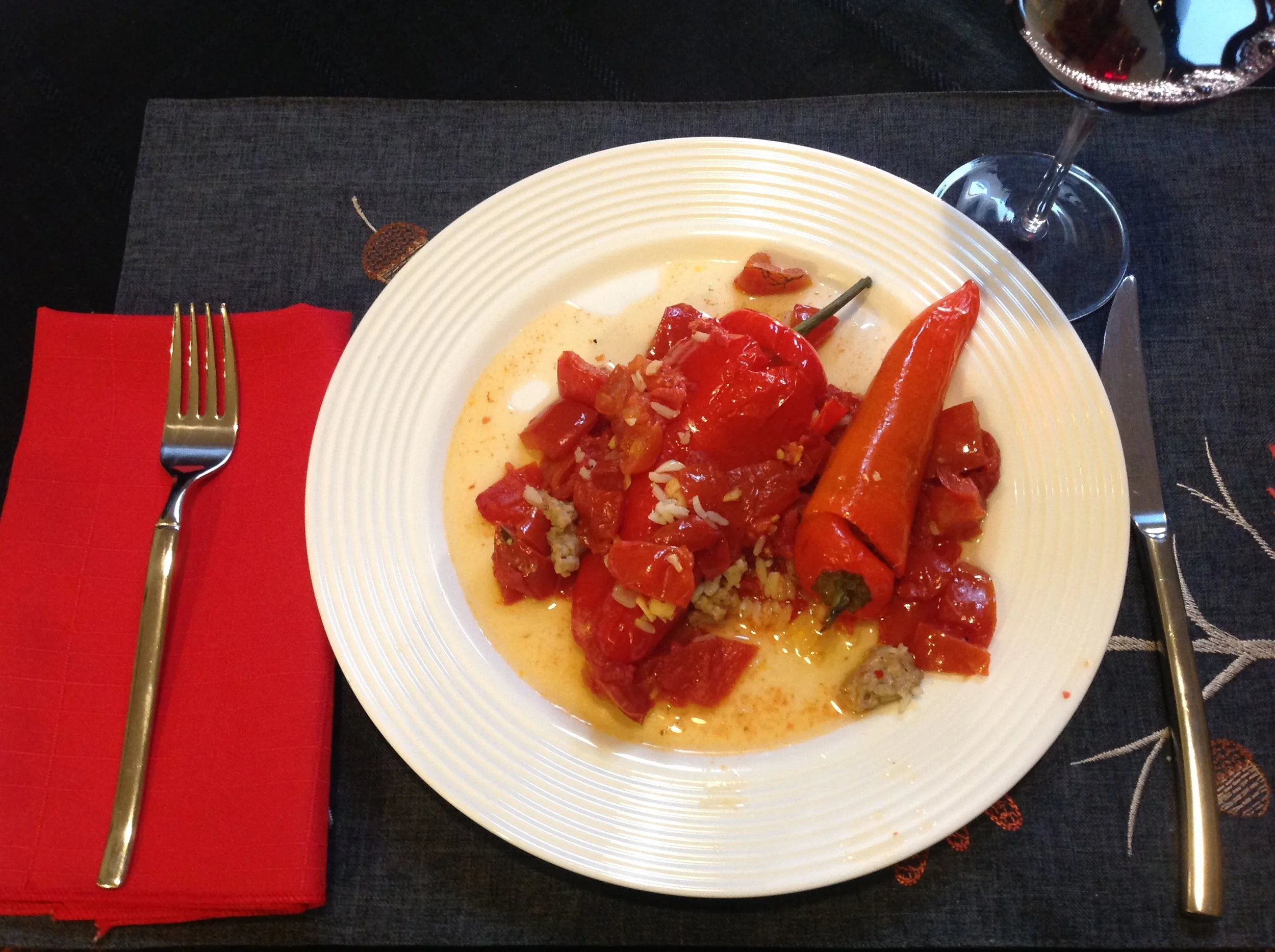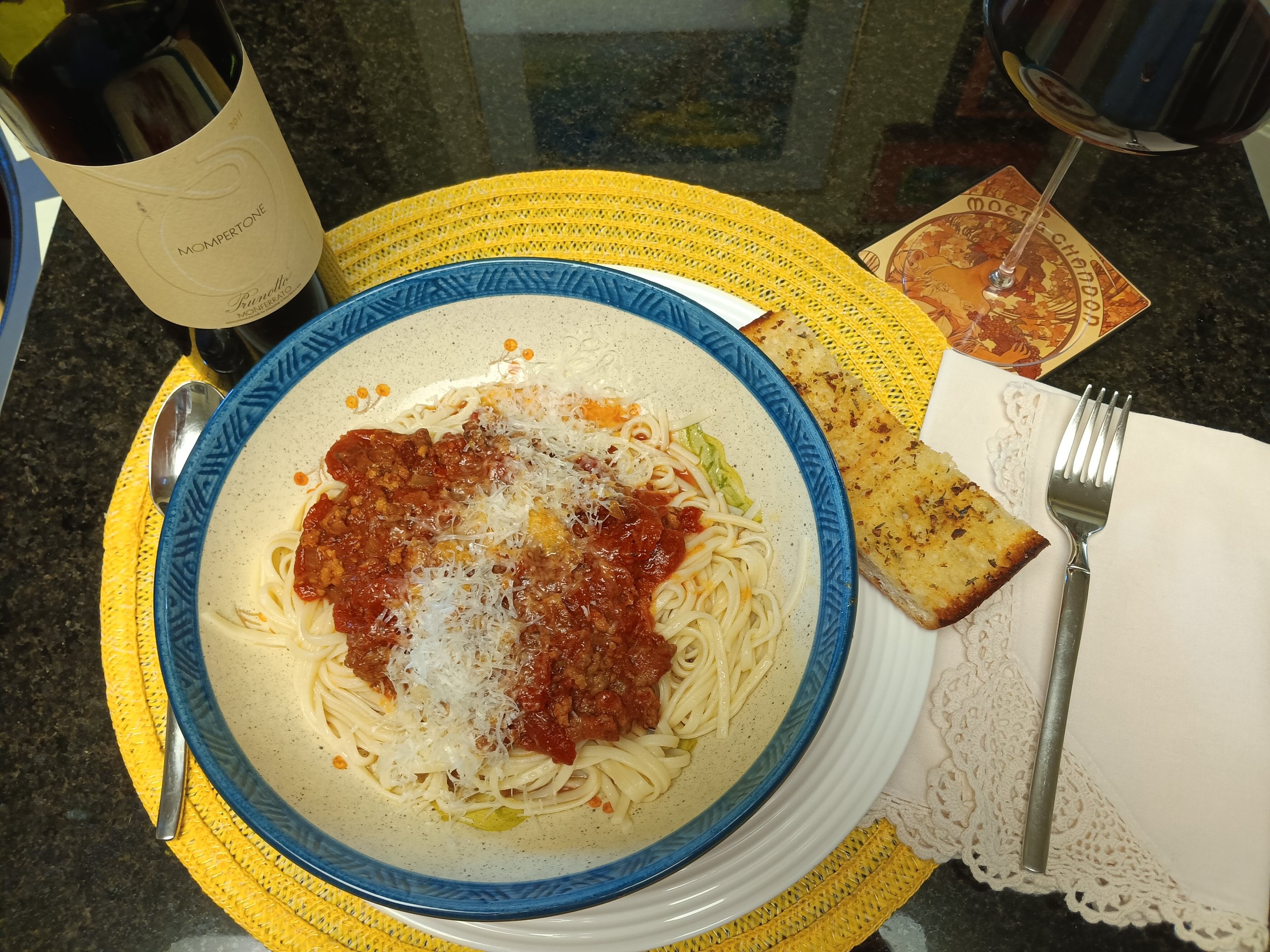Pasta with Tomatoes and Parmesan Cheese

Two Great Pasta Recipes Using Fresh Tomatoes
Wondering how to use up some of that never ending avalanche of small tomatoes? If you have cherry tomatoes, grape tomatoes and/or plum tomatoes, they never seem to stop producing until the snow flies. We have one plant and it way exceeds what we can eat in salads or as hors d’oeuvres. So, we saw the first recipe in the May 2020 issue of “Real Simple” and liked the idea of using some of the smaller tomatoes that never stop accumulating. However, the ingredient list and the process went against the grain of everything I know about making pasta. It sounded like a gooey sticky mess. The ingredient list is pretty much as listed, but, I have changed all of the quantities and changed all of the procedures.
Pasta with Plum Tomatoes and Parmesan Cheese
INGREDIENTS
1 ½ cups of small tomatoes halved and seeded ¼ tsp freshly ground black pepper + more for serving ¼ cup olive oil, divided ¼ tsp kosher salt, divided 1 ½ tbsp panko crumbs ¾ cup Parmigiano Reggiano / pecorino Romano cheese finely grated, divided ½ cup yellow onion chopped ¼ cup crushed and chopped garlic ¾ cup cream ¾ cup chicken broth 5 oz. uncooked penne rigate
PREHEAT oven to 475 degrees. Toss tomatoes, pepper, pinch of salt and a tablespoon of oil. Spread them on a baking sheet in a single layer and bake for 10 minutes. BOIL the pasta in a quart of water with a bit of oil and salt added*. Cook until al dente (do not drain). MEANWHILE heat another tablespoon of oil in a large skillet over medium heat. Add the panko and stirring constantly; allow it to reach a golden brown. Remove from heat and add ¼ cup of cheese. It will almost instantly form a sticky glob. That is fine, just remove it from the pan scraping the pan clean with a spatula. Set the panko/cheese mixture aside. When it fully cools, chop it with a chef’s knife until it is crumbs again. To the same pan, add the rest of the oil, onions and garlic. When soft and translucent, add the broth and cream. Cook until slowly simmering. Add the roasted tomatoes and toss with the remaining cheese. With a slotted spoon, remove the pasta from the water and toss it with the sauce mixture. If too dry, add a bit of the pasta water until it is wet and sloppy. Serve and garnish with more cracked black pepper (more salt too, if desired) and the toasted panko/cheese crumbs. Serve with garlic bread and a medium bodied red wine. Serves two.
Carbonara Alberto
In case you didn’t know, the A in A Brian Cain is for Albert or as my grandmother used to call my dad, Alberto. This is a recipe I adapted from this month’s Wine Enthusiast to use up some more tomatoes..
INGREDIENTS
1 large egg 2 Tbsp Extra Virgin Olive Oil, divided 1 1/2 ounces of Parmigiano-Regiano / Pecorino Romano finely grated 1/4 tsp cracked black pepper 4 ounces uncooked spaghetti, linguine or fettuccine 2 ounces of diced pancetta 1 large clove of garlic crushed and chopped 1 small hot pepper seeded and chopped 1 cup of seeded chopped tomatoes, any size or variety salt, optional
In a medium bowl beat the egg with one Tbsp EVOO. Add cracked pepper and cheese mix well and set aside. MEANWHILE, heat a quart of water with oil and salt*. When boiling vigorously, add pasta. Cook until al dente. HEAT a large skillet and sprinkle with the rest of the EVOO. Add the pancetta and cook until just lightly browned. Add the garlic and peppers until heated and releasing the aroma. Add the tomatoes and toss. DO NOT drain the pasta. With a slotted spoon or other such utinsil, add the pasta to the pancetta mixture and toss, once more. Add about a half to three quarters of a cup of pasta water to the pan and toss. If too thick, add a bit more pasta water. Serve with garlic bread and a full bodied red wine. Serves two.
*There is a good deal of debate regarding the addition of oil and salt to pasta water. Adding the oil simply makes the pasta more slippery so that the sauce doesn’t stick to it. It prevents the dish from becoming a sticky gooey mess keeping it bouncy and wet. The salt lowers the boiling point. Although this will lengthen the cooking time, it also dramatically increases the odds of achieving that perfect al dente texture. It gives you a very wide margin of error between uncooked and mushy. It will always come out just right.
Enjoy in Good Health, A Brian Cain, the Michigan Vintner




